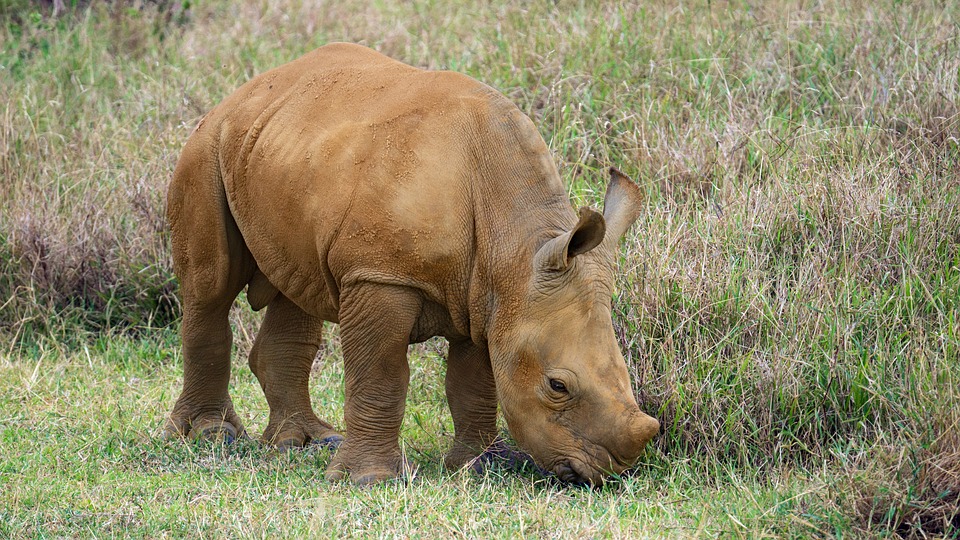What started as a Victorian hunter's list of Africa's most formidable foes has become every safari-goer's ultimate bucket list, and Tsavo's vast wilderness holds the keys to checking off all five legendary encounters.
The Big Five weren't named for their size or beauty; they earned their fearsome reputation as the most dangerous animals to face on foot, the ones that could turn hunters into hunted in a heartbeat.
Today, these same magnificent predators and giants represent the holy grail of wildlife photography and unforgettable safari moments. But here's what separates successful Big Five spotters from disappointed tourists: knowing exactly where these elusive legends hide and how they behave in Tsavo's unique ecosystem.
The African Elephant:
Tsavo is home to Kenya's largest elephant population, with approximately 16,000 elephants residing in the Tsavo Conservation Area, representing about 40% of Kenya's total elephant population of 36,280, according to recent data. Kenya's elephant population is currently growing at an encouraging annual rate of 5%.
Tsavo East is particularly renowned for its iconic 'red elephants,' which acquire their distinctive rusty color from dusting themselves with the iron-rich red soil. This behavior serves multiple purposes: protection from insects, sun protection, and thermoregulation.
Best Viewing Locations
Tsavo East:
Galana River: Prime elephant habitat where large herds gather for water
Aruba Dam: Built in 1952, this reservoir attracts numerous elephants and water birds
Mudanda Rock: A 1.6km inselberg offering excellent vantage points for observing hundreds of elephants during dry season
Yatta Plateau: The world's longest lava flow provides elevated viewing opportunities
Tsavo West:
Mzima Springs: Crystal-clear springs where elephants come to drink and bathe
Ngulia Hills: Rocky terrain favored by elephant herds
Chyulu Hills area: Border region with diverse elephant populations
The Lion:
Tsavo's lions hold a special place in wildlife history, immortalized by the famous "Man-Eaters of Tsavo" story. Today's lion population in the Amboseli-Tsavo ecosystem is estimated at approximately 675 individuals as of recent counts.
Tsavo lions are distinctive for their shorter manes compared to other African lion populations. This adaptation is attributed to the hot, dry climate of the region.
Best Viewing Locations
Tsavo East:
Open plains around Voi area: Excellent for spotting lions hunting zebras and wildebeest
Aruba Dam vicinity: Lions frequent this area due to high prey concentrations
Galana River region: Riverine areas provide shade and hunting opportunities
Tsavo West:
Acacia woodlands: Lions often rest under trees during hot midday hours
Rocky outcrops: Provide elevated hunting vantage points
Ngulia area: Regular lion sightings reported
The African Buffalo:
Large herds of African buffalo are common throughout both Tsavo parks. These formidable bovines are generally easier to spot due to their size and gregarious nature.
Best Viewing Areas
Tsavo East:
Galana River floodplains: Excellent grazing areas
Seasonal swamps: During the wet season
Open savanna areas: Year-round sightings
Tsavo West:
Mzima Springs area: Lush vegetation attracts large herds
Chyulu Hills foothills: Diverse grazing opportunities
Seasonal wetlands: Particularly during the rains
The Leopard:
Leopards remain the most challenging of the Big Five to spot in Tsavo. Leopard sightings are classified as "rare" in Tsavo East, requiring patience and expert guiding.
Best Viewing Spots
Tsavo East:
Galana River corridors: Dense vegetation provides ideal hunting grounds
Rocky areas: Natural camouflage and elevated resting spots
Early morning drives: Higher activity levels at dawn
Tsavo West:
Ngulia Hills: Rocky terrain with numerous hiding spots
Mzima Springs area: Prey concentration attracts leopards
Night drives: Where permitted, offer the best chances
The Rhinoceros: Critically Endangered Giants
The black rhinoceros represents the most challenging Big Five member to spot in Tsavo, with populations critically endangered. The region harbors 18% of Kenya's black rhino population.
Current Status and Protection
Tsavo West - Ngulia Rhino Sanctuary: This 90-square-kilometer fenced sanctuary provides the best opportunity to see black rhinos in Tsavo. The sanctuary was established in 1986 and currently protects a significant portion of the park's rhino population.
Best Viewing Opportunities
Ngulia Rhino Sanctuary visits: Organized tours offer the highest success rate
Early morning sanctuary drives: Rhinos are most active during cooler hours
Conservation Success
The sanctuary has been crucial in rhino recovery efforts, with populations slowly increasing under intensive protection and monitoring programs.
Beyond the bucket list
Here's the beautiful truth about your Tsavo safari: every game drive you take, every park fee you pay, and every local guide you hire becomes a vote for wildlife conservation that echoes long after you return home.
You're not just collecting incredible Big Five memories; you're joining a global movement that ensures future generations will witness the same heart-stopping moments you're about to experience. Tsavo's vast wilderness offers more than just legendary wildlife encounters; it provides the chance to be part of something bigger than yourself.
Ready to transform your vacation into a conservation victory story that protects Africa's most magnificent creatures for decades to come?
